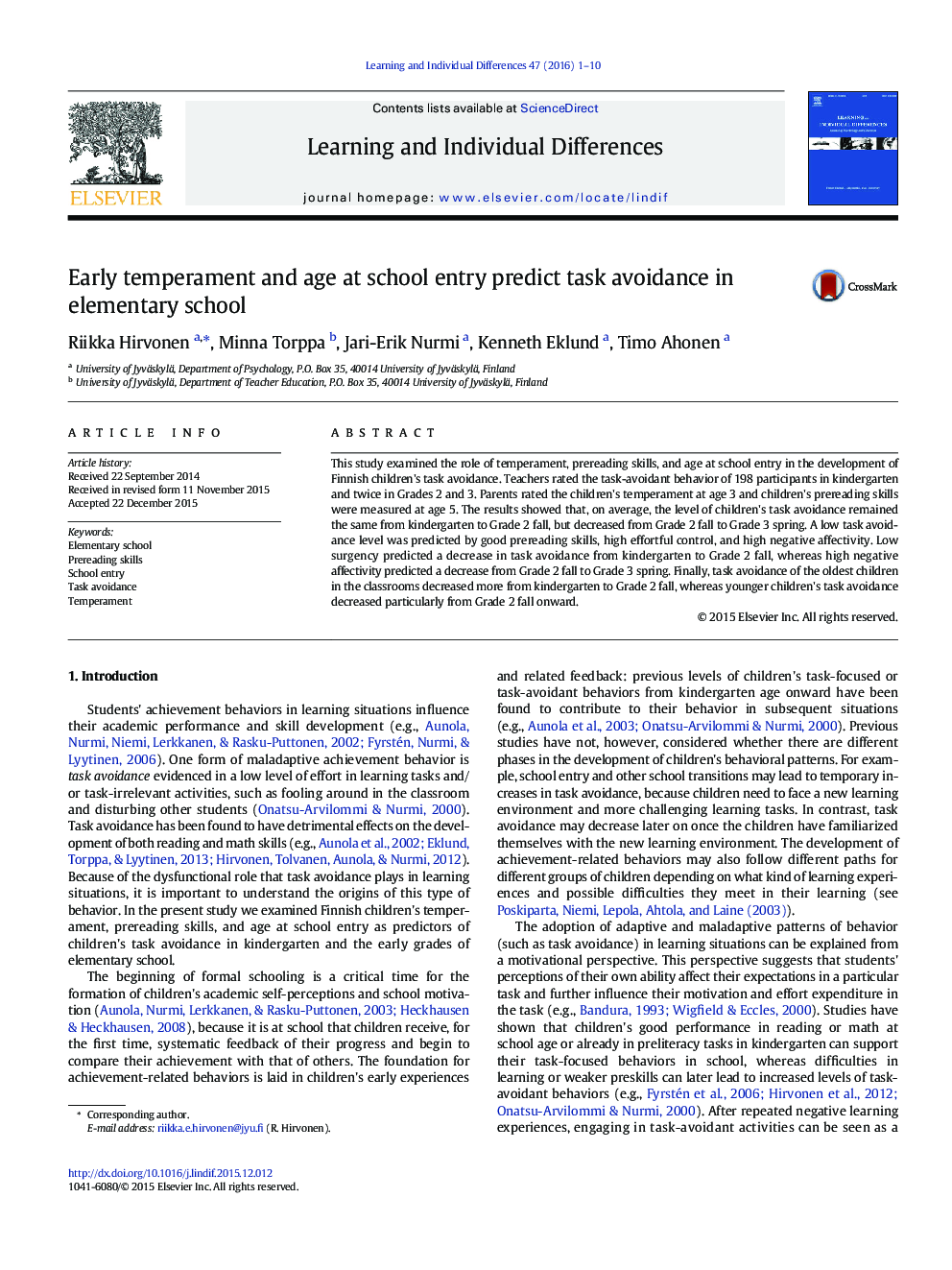| Article ID | Journal | Published Year | Pages | File Type |
|---|---|---|---|---|
| 364582 | Learning and Individual Differences | 2016 | 10 Pages |
•The development of children's task avoidance was examined from kindergarten to Grade 3.•On average, task avoidance first remained stable and then decreased in Grades 2 and 3.•Parent-rated temperament at age 3 predicted the level and changes of task avoidance.•High prereading skills at age 5 predicted a low level of task avoidance.•Younger children's task avoidance decreased later than that of children born earlier.
This study examined the role of temperament, prereading skills, and age at school entry in the development of Finnish children's task avoidance. Teachers rated the task-avoidant behavior of 198 participants in kindergarten and twice in Grades 2 and 3. Parents rated the children's temperament at age 3 and children's prereading skills were measured at age 5. The results showed that, on average, the level of children's task avoidance remained the same from kindergarten to Grade 2 fall, but decreased from Grade 2 fall to Grade 3 spring. A low task avoidance level was predicted by good prereading skills, high effortful control, and high negative affectivity. Low surgency predicted a decrease in task avoidance from kindergarten to Grade 2 fall, whereas high negative affectivity predicted a decrease from Grade 2 fall to Grade 3 spring. Finally, task avoidance of the oldest children in the classrooms decreased more from kindergarten to Grade 2 fall, whereas younger children's task avoidance decreased particularly from Grade 2 fall onward.
